Zion may be one of America’s smaller national parks, but it always ranks as one of the most popular. Suffice to say, it’s a park with a lot of layers. That starts with its iconic rock formations, geologic strata that consists mostly of Mesozoic-aged sedimentation dating back 150 million years. The park’s more recent history extends to its founding as Utah’s first national park in 1909. Having just marked the 100-year anniversary on November 19, 2019, those who love Zion are looking toward the next century to ensure it remains in pristine condition — functioning well to keep the small park open to all, amid added crowd pressure.
About that outsized popularity. Of the 60 designated national parks, Zion ranks fourth in visitation behind Great Smoky, Grand Canyon and Rocky Mountain according to the NPS’s most recent numbers (from 2018, when Zion saw 4.3 million visitors). For park stakeholders, managing the volume of visitors requires a unique mix of proactivity and collaboration.
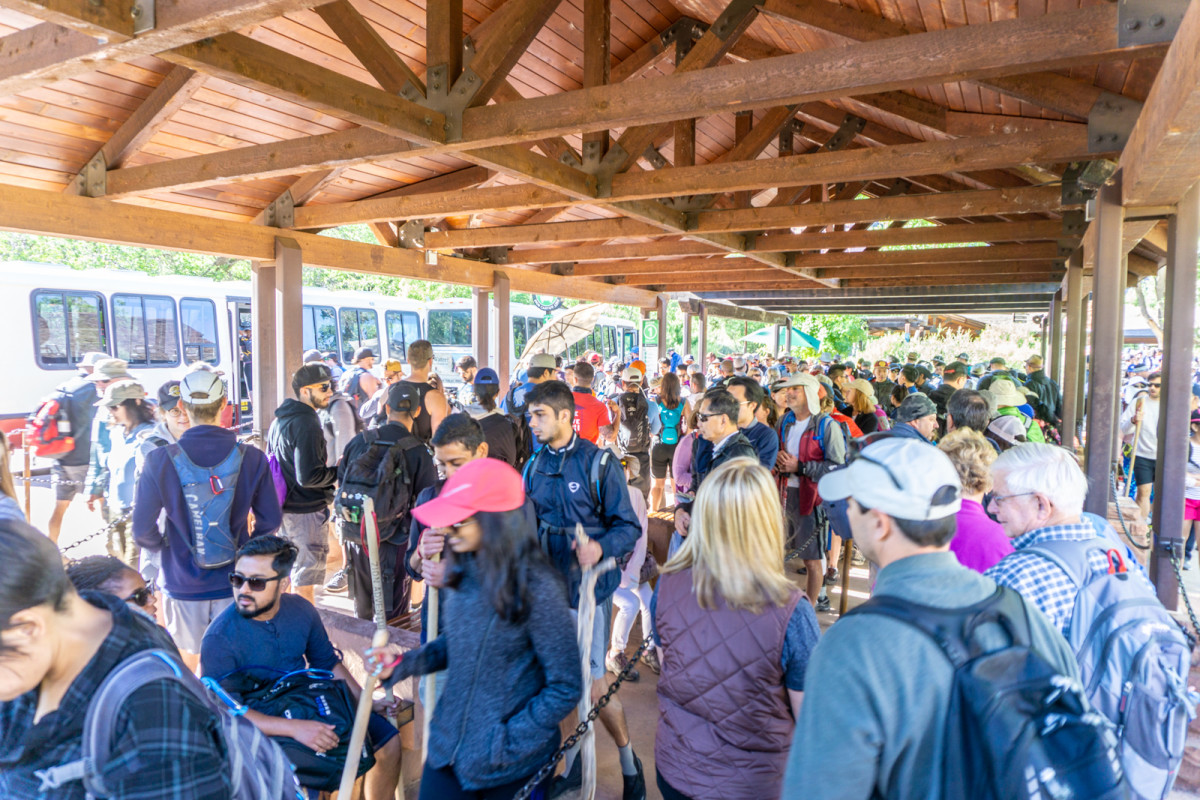
“In order to help 4.3 to 4.5 million people experience the park, it takes a lot of intentional management,” says Kacey Jones, Assistant Director of Development for the Zion National Park Forever Project. The management is unique insofar as it is partly supported by the Forever Project, which helps offset some funding for initiatives like free junior ranger booklets. More recently, the Zion Forever Project released a full-length film entitled, Where Forever is Now celebrating how protecting the park unites the consortium of communities, visitors, staff, volunteers and local area neighbors.
“Being asked to create this kind of film for, and on behalf of, the National Park Service was truly unique,” says Producer Shandi Kano. “And it was an honor that the purpose of our work was to help others feel a sense of responsibility to their public lands. Our mission was to let the land speak through the myriad of visitors who come to Zion, fall in love with it, and let it impact how they live.”
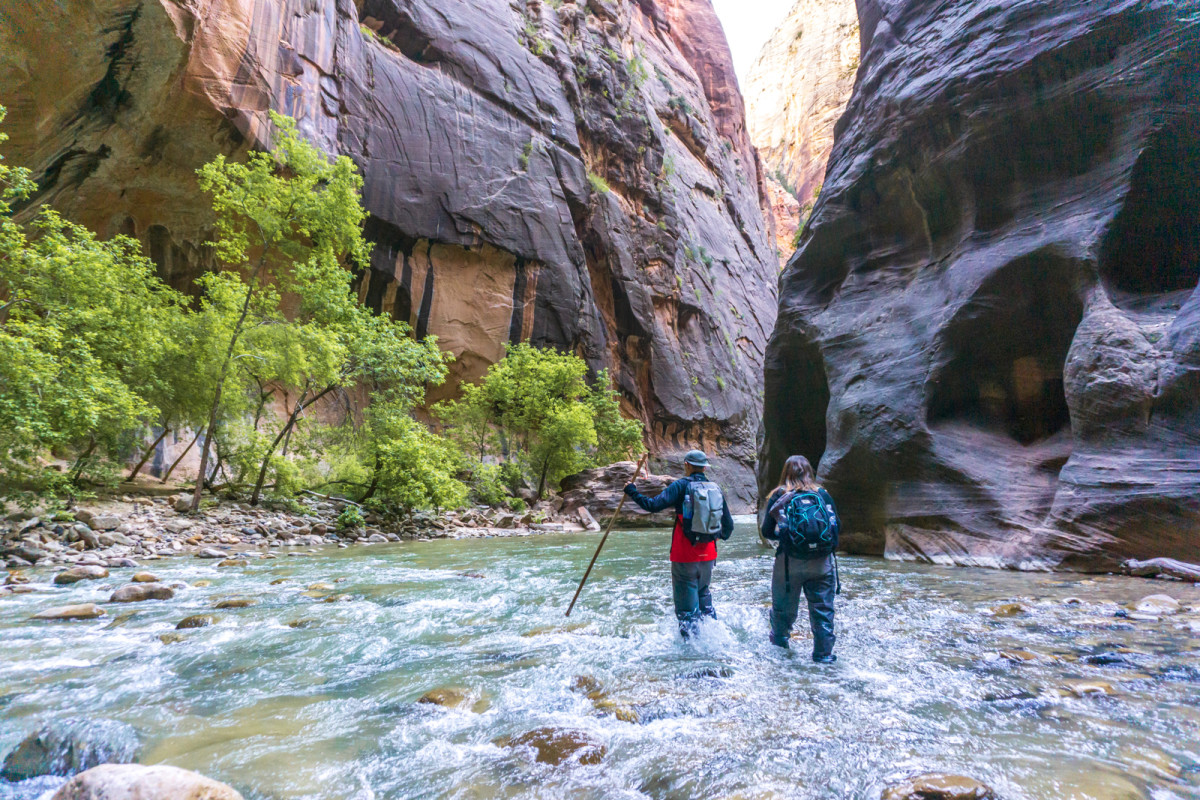
And the land certainly still speaks volumes. The park’s loudest main attraction, of course, is Zion Canyon, which dons the iconic reddish Navajo Sandstone. Running 15 miles and home to the famed Narrows hike up the North Fork Virgin River, Zion Canyon is mainly accessed by shuttles filled with a variety of visitors — ranging from climbers with haul bags, elderly sightseers with binoculars who won’t leave the people-mover, to the day-hiking majority of users.
Appreciating the park’s enduring worthiness in spite of its popularity starts with knowing that there is more to Zion than the Narrows. Taking advantage of the off-season to avoid crowds is a start. Currently everything in the park is open for the “off season,” with the exception of a couple trails (Weeping Rock, East Rim to Observation Point, and Hidden Canyon) closed indefinitely due to rock fall, and the Lower Emerald Pools trail closed for maintenance (scheduled to reopen this spring). Beyond heading off the beaten path — apply for a backcountry permit to explore other stunning slot canyons, or enlist a guide for the day — another way to consider the park’s lasting impact is on the people who call the area home.
“I was not raised in an outdoor family,” says Jones. “I first visited Zion with my parents, it was back in the days when you could drive into the park, we rented an RV and when that door swung open and I saw the Great White Throne for the first time, it was such a powerful experience to me. Rhetoric aside, that’s the day I joined the public lands community.”
The word Zion is often used to characterize a sanctuary or physical location that connects “God” with humans. Anyone who’s been to Zion can attest it’s an accurate name for divine feelings evoked. Even for visiting atheists, the landscape’s aura and awe are undeniably powerful. Founders chose the name to appease groups opposed to the original Native American name of Mukuntuweap National Monument (used from 1909 – 1919).
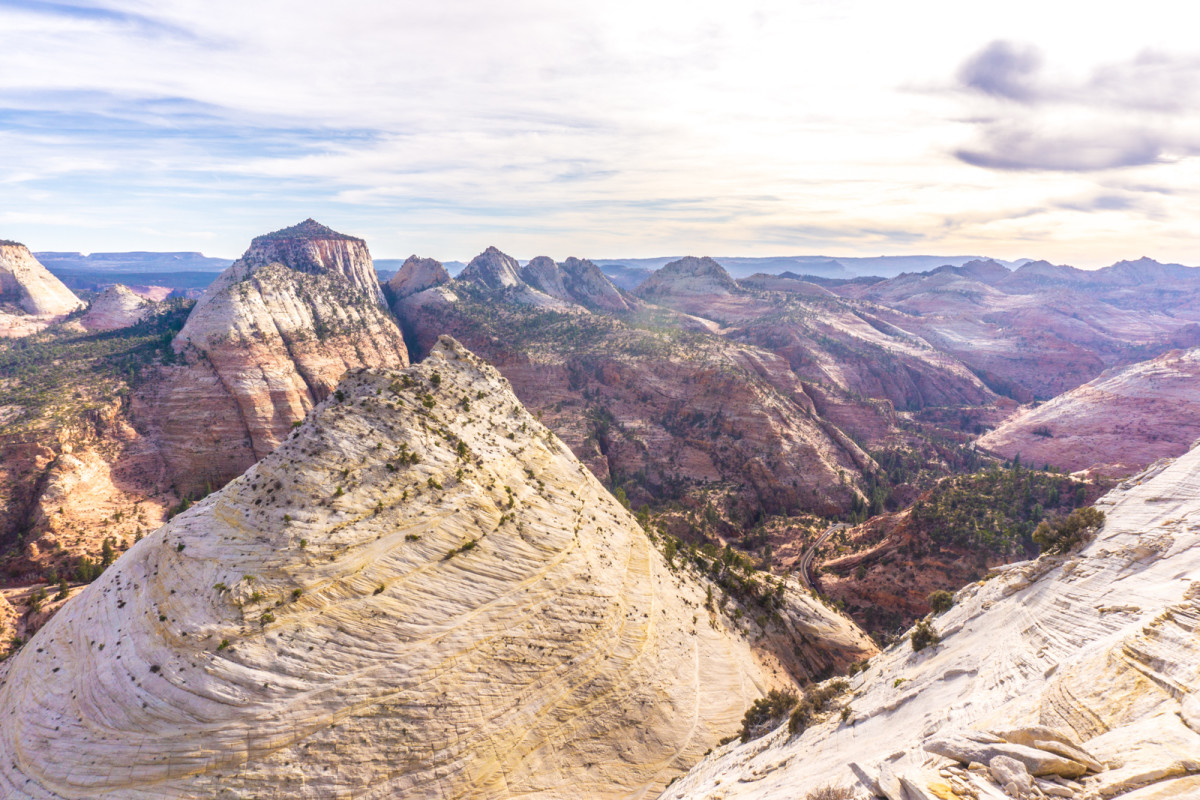
“Zion is a place where I’ve had some of my life’s most intense, adventurous experiences … It truly is wild out there,” says Kano. “So when I think about what it meant to play a role in its preservation, I can’t help but feel a sense of community. Zion, like all our national parks, really does belong to each of us. It’s ours. And that means that all of us, whether we are the world’s most elite athletes, spending decades of our lives there, or a once-in-a-lifetime visitor just hoping to catch a glimpse of Zion’s otherworldly-ness, all have a responsibility to it.”
The film also touches on Zion’s infrastructure that was largely built thanks to the Civilian Conservation Corps, part of President Franklin D. Roosevelt’s New Deal, which developed many of America’s other iconic national parks. Another “new deal” so to speak coincided with Zion’s 100th birthday (on Nov. 19, 2019), with the acquisition of private land that will make the Narrows permanently open (weather dependent).
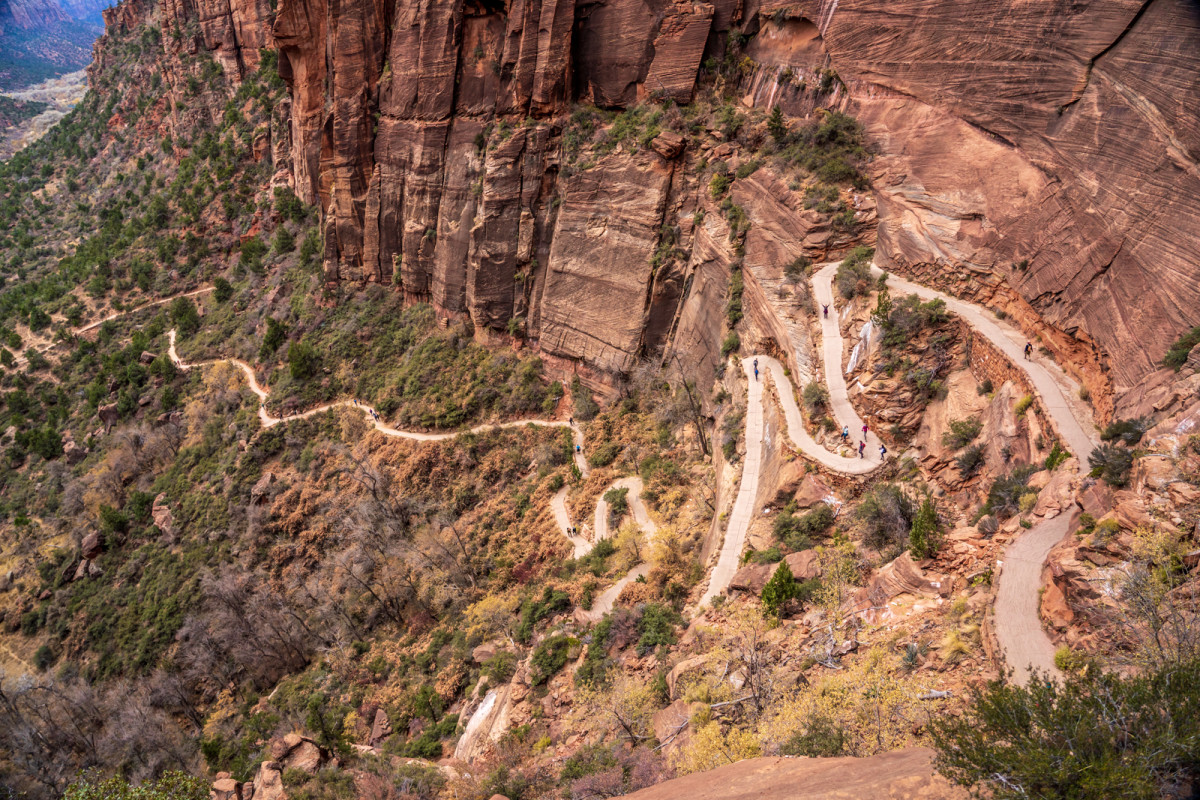
“Spending more time in Zion than with our own families this last year really gave us perspective that I don’t think a lot of visitors have,” Kano says. “And that is, that it takes so much more — so much more than what meets the eye — to just keep the park open. And as we’ve seen a steady decline in government funding for the NPS, we got to see and experience first-hand the kind of work that the Zion Forever Project does in lieu of that. From re-building trails to paying to keep the park open during the government shutdown, it seems like basic everyday functions of a place like Zion rely on donations and funding to the nonprofit.
“As visitation continues to grow, not just to Zion but to all our public lands, this kind of nonprofit work will be crucial,” Kano adds, noting infrastructure-management challenges ahead, from natural and geological events to shifting political perceptions of the value of protected public lands. “It already is.”
The feature-length film is yet to be released to the public. However, a shorter version will be used as an orientation film shown in the Zion Human History Museum (March-Nov.) and in the Zion Canyon Visitor Center (Dec.-Feb.). The museum closes for the winter months.
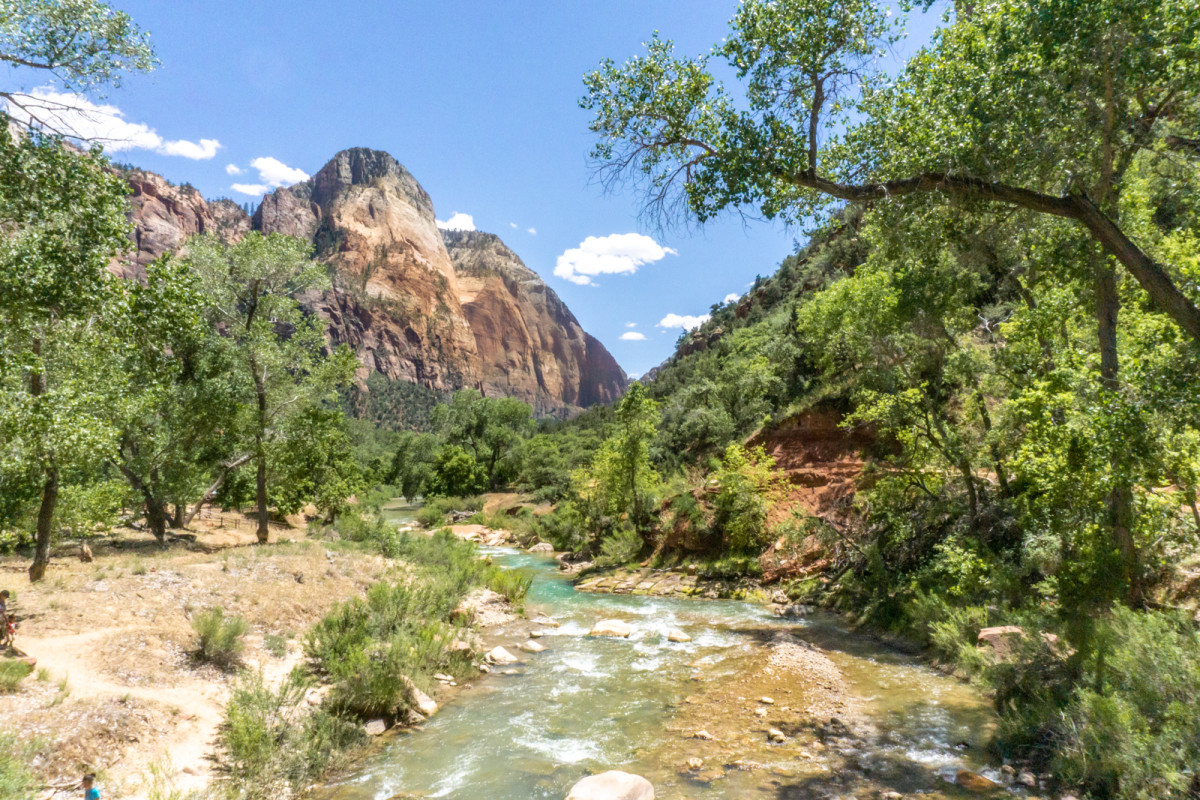
from Men's Journal https://ift.tt/3aBjBA5
No comments:
Post a Comment